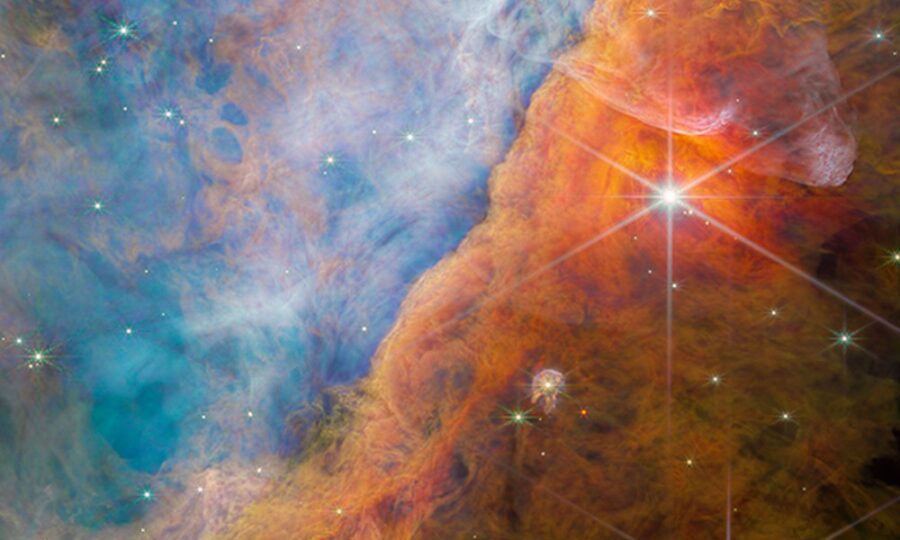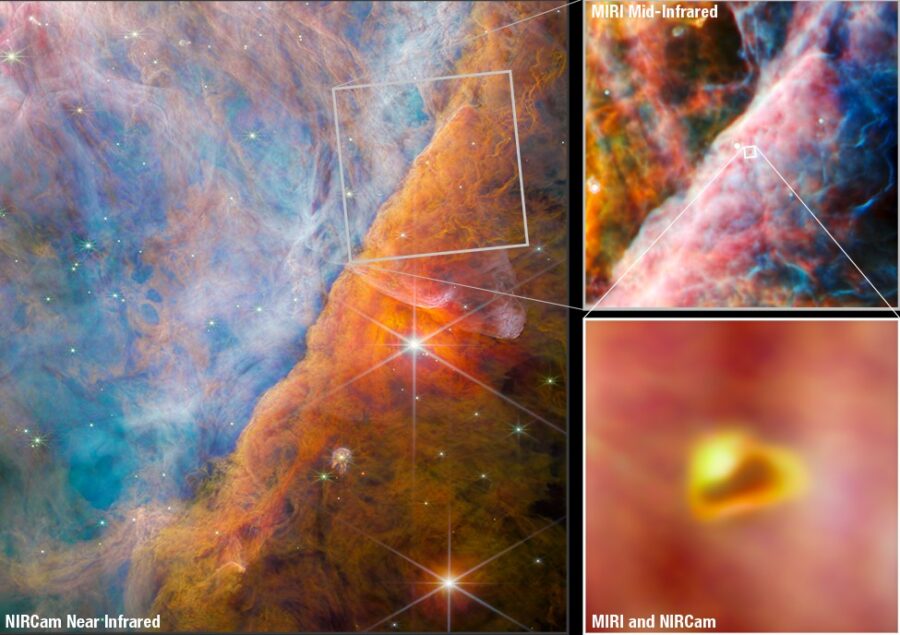NASA Spots Building Block For Life In Distant Galaxy
NASA found carbon molecules, the building block of life, in the Orion Nebula.

NASA made an incredible discovery this week using the iconic James Webb Space Telescope, according to a research paper published in Nature. Deep within the distant reaches of the gassy Orion Nebula, scientists claim to have located a carbon-based molecule that has never been detected in outer space and serves as one of the building blocks for life on Earth.
While there’s currently no way to know for sure if the distant system supports life of its own, this discovery brings scientists another major step closer to finding out.
The molecule, called methyl cation, or CH3+, was located 1,350 light-years from Earth in a system called d203-506, surrounded by dust clouds and space gas that engulf the entire region. NASA says the system revolves around a small red dwarf at its center, clocking in at about one-tenth the mass of our sun.
While CH3+ doesn’t seem to react when in contact with hydrogen, the carbon-based molecule is known to bind with numerous elements to create positively charged ions.
In a statement from Marie-Aline Martin-Drumel, the spectroscopist at Paris-Saclay University who co-authored the research which led to the discovery, she confirms that the molecule serves as an important building block for all life on Earth, meaning it could potentially serve as a foundation for alien life as well.
NASA’s use of the James Webb Space Telescope has led to thousands of highly sensitive space discoveries in recent years, opening many paths toward better understanding the universe around us than we ever previously thought possible.
The James Webb takes images at infrared and near-infrared wavelengths, allowing NASA and associated scientists to view cosmic phenomena beyond the traditional scope of visual clarity, such as CH3+, by cutting through highly gaseous and dust-filled regions of outer space.

This explains why so many recent discoveries have been made using the JWST, as previous telescopic technology, such as the Hubble, were impaired by their visual clarity. For example, the Hubble could never pierce through the thick cosmic clouds present within the Orion Nebula to locate molecules of CH3+ without the infrared scanning technology available.
The NASA discovery of CH3+ came about as a means of the PDRs4 scientific collaboration, which has been imaging and analyzing Photo-Dissociation Regions in order to locate and display the ultraviolet radiation found in warm regions of dust and gaseous clouds across the universe.
The collaborative effort has uncovered a number of fascinating scientific discoveries using the James Webb, and aims to peer even further into the distant reaches of space as the team continue their research.
Due to the time dilation which occurs when peering into the distant reaches of space, hundreds or thousands of light-years from Earth’s purview, NASA scientists who look deep into the expanse are capable of seeing into the distant past, as the light at the furthest stretches of the universe takes a great deal of time to reach our eye.
Because of this, the James Webb Space Telescope can peer into the ancient past and witness primordial galaxies far beyond the scope of mankind’s history, providing insight into the early stages of the universe’s creation.
While the existence of CH3+ in the d203-506 system seems to imply the possibility of life within the system, either now, or in the distant past, it remains impossible to know for sure. For now, all we can do is wait for the brilliant minds at NASA to continue to search for answers.












